Vast, diverse, deeply spiritual and utterly unforgettable, India is unlike anywhere else on earth – a melting pot of ethnicities and religions, a treasure trove of history and culture, and a curious mixture of chaos and serenity. Stretching across more than three million square kilometres, it encompasses a staggering array of landscapes, vistas and environs, and offers unparalleled travel experiences – from the beautiful beaches of Goa, to the compelling craziness of Kolkata, the sacred Ganges river banks of Varanasi, the snow-capped peaks of the Himalayas in Kashmir and the ancient, exquisitely crafted temples dotted across the entire country. Not to mention the vibrant, friendly people, and the incredible cuisine.
A handful of skyscrapers reach for the sky in the CBD of Gurgaon, a northwestern metropolis in the province of Huryana, near Delhi. Historically known as Guru Gram, the dormant town gathered economic momentum when Indian automobile manufacturer, Maruti Suzuki India Limited, set up a manufacturing plant here in the 1970s. Just a few decades later, half the Fortune 500 companies had opened offices in Gurgaon. Despite the congested urban areas, birding enthusiasts can find respite at Sultanpur Bird Sanctuary, a famous bird-watching spot only 15 km from the city.
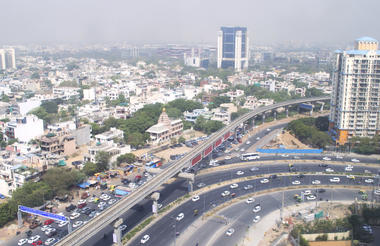
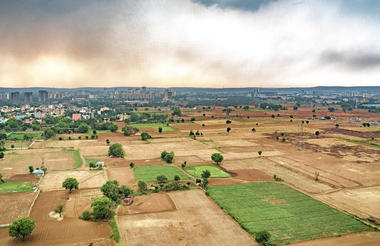
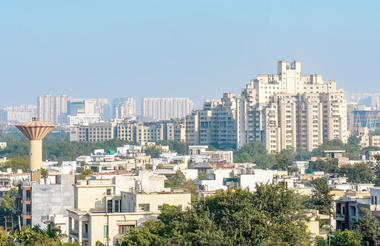
Consistently voted the happiest country in the world, the little nation of Bhutan is set at the far eastern end of the Himalayas, between India and China. Bhutan only began to open its doors to outsiders in the 1970s and still has a strict sustainability policy regarding tourism. As a result, it has retained a deep cultural authenticity and has preserved its environment admirably, making it one of Asia’s most beguiling and unforgettable destinations. Highlights include incredible forts and temples perched on sheer mountain cliffs, a rich (predominantly Buddhist) culture, and spectacular scenery – ranging from temperate sub-tropical plains and valleys cloaked with dense forest to lofty sub-Alpine mountains capped with snow.
Resting in a lush green valley of hills and rice paddies, Bhutan’s capital city of Thimphu is the country’s commercial and religious hub, and is known for its interesting fusion of ancient and modern elements. Historical architecture and ancient traditional elements juxtapose with contemporary buildings and sensibilities. The imposing, stately 350-year-old Tashicho Dzong Fortress is currently used as the administrative centre of the county, and is also the king’s office. Visitors can explore the gold-spired Memorial Chorten, a revered Buddhist shrine; see the intricate frescoes and slate carvings at Simtokha Dzong; and discover the Bhutanese way of live through exhibits and folk dances at the fascinating National Folk Heritage Museum. The city bustles with cafes, clubs and restaurants, thereby offering the best of old- and new-world charms.
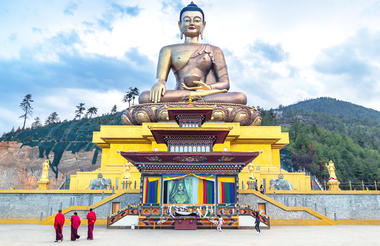
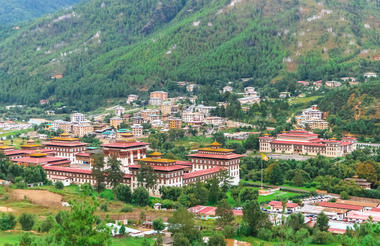
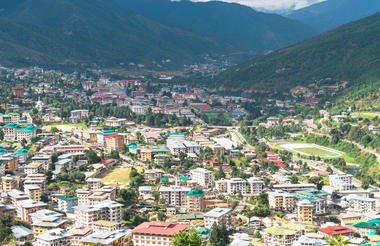
Perched in the far northern reaches of Bhutan, Gasa is a region of striking natural beauty, defined by its rugged mountains, deep valleys, and thick forests. This remote district is located along the border with Tibet, with its altitude varying from 1,500 metres in the valleys to over 4,500 metres at its highest peaks. Gasa's history is deeply entwined with its strategic location, serving as a crucial link between Bhutan and Tibet. The region is renowned for its ancient Gasa Dzong, a fortress that has withstood centuries and still functions as a religious and administrative centre. Visitors can explore the area's pristine hot springs, revered for their medicinal properties, and trek through the stunning Jigme Dorji National Park, home to diverse flora and fauna, including the elusive snow leopard. The annual Gasa Tsechu festival provides a vibrant display of local culture, featuring masked dances and traditional music.



Sitting pretty at an altitude of 2200 metres above sea level, Paro is the gateway to beautiful Bhutan. Planes make an incongruous sight, flying low as they prepare for landing in this Himalayan oasis, home to many of Bhutan's oldest temples and monasteries. Resting on the banks of the Paro River, there is plenty to observe in this traditional town, from quaint farmhouses scattered across the valley to emerald green terraced paddy fields . For outdoor enthusiasts and adventure seekers alike, a great day excursion is to trek to the famous Tiger's Nest Temple, on the face of a sheer 1000-metre-high cliff. This acclaimed temple houses the National Museum, which shows hundreds of ancient Bhutanese artefacts and artwork. It's advised to do this at the end of a trip, once travellers have acclimatised.








